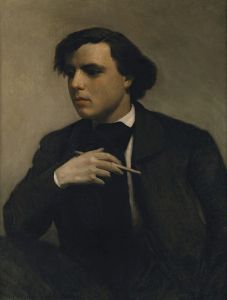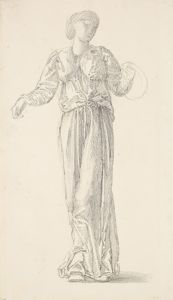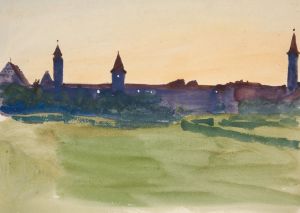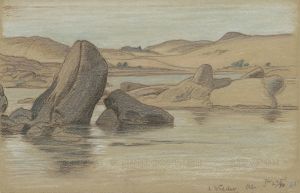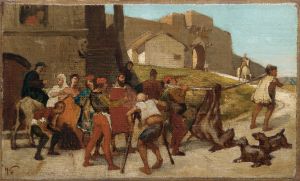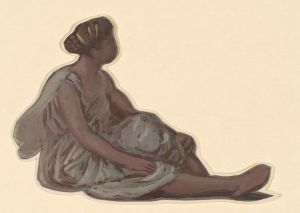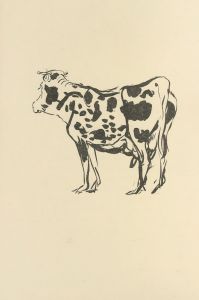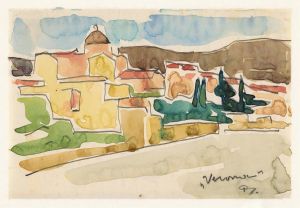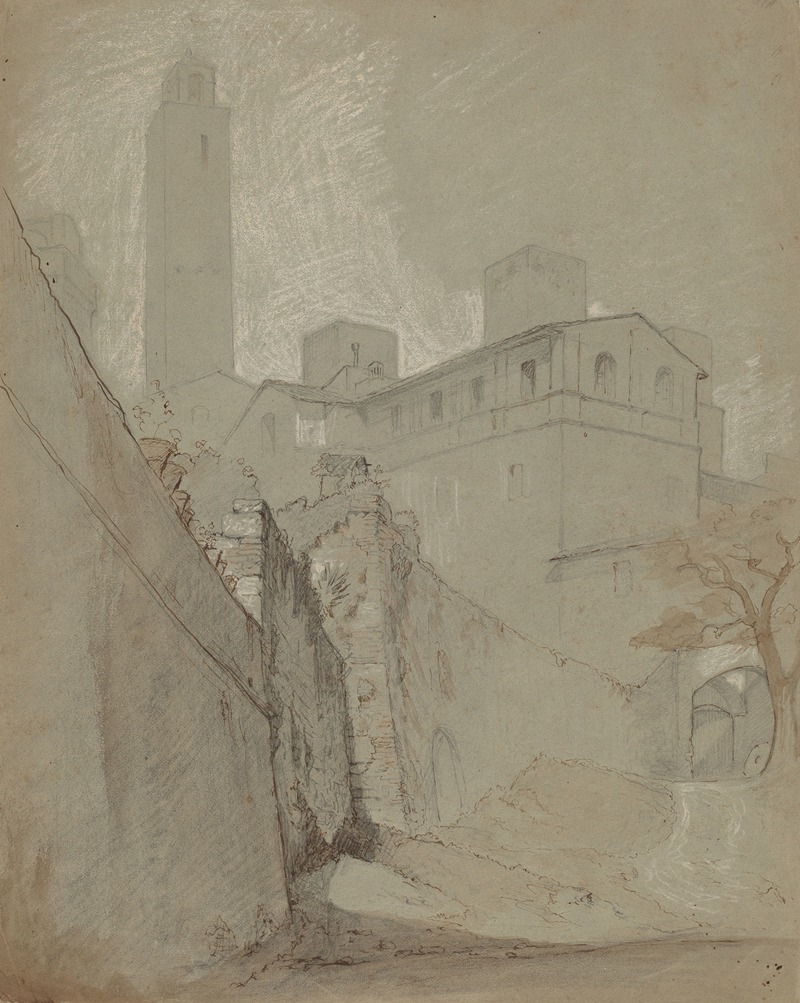
Orvieto
A hand-painted replica of Elihu Vedder’s masterpiece Orvieto, meticulously crafted by professional artists to capture the true essence of the original. Each piece is created with museum-quality canvas and rare mineral pigments, carefully painted by experienced artists with delicate brushstrokes and rich, layered colors to perfectly recreate the texture of the original artwork. Unlike machine-printed reproductions, this hand-painted version brings the painting to life, infused with the artist’s emotions and skill in every stroke. Whether for personal collection or home decoration, it instantly elevates the artistic atmosphere of any space.
Elihu Vedder (1836-1923) was an American symbolist painter, book illustrator, and poet, known for his mystical and allegorical works. One of his notable paintings is "Orvieto," which captures the essence of the Italian town of the same name. Vedder's connection to Italy was profound; he spent a significant portion of his life there, drawing inspiration from its landscapes, culture, and history.
"Orvieto" was created during Vedder's time in Italy, where he was deeply influenced by the Italian Renaissance and the picturesque scenery. Orvieto, a town in the Umbria region, is renowned for its stunning cathedral, medieval architecture, and dramatic setting atop a volcanic tuff cliff. Vedder's painting reflects his fascination with the town's unique beauty and historical significance.
The painting "Orvieto" is characterized by Vedder's meticulous attention to detail and his ability to capture the atmospheric qualities of the landscape. The composition likely includes elements such as the town's iconic cathedral, rolling hills, and the interplay of light and shadow that gives the scene a timeless quality. Vedder's use of color and brushwork would have been aimed at evoking the serene and almost mystical ambiance of Orvieto.
Vedder's work often incorporated symbolic and allegorical elements, and while "Orvieto" primarily serves as a landscape, it is possible that he imbued the scene with deeper meanings, reflecting his philosophical and artistic interests. His paintings frequently explored themes of destiny, the human condition, and the passage of time, which may subtly influence the way he portrayed Orvieto.
Elihu Vedder's contributions to art extend beyond his paintings. He is also well-known for his illustrations of "The Rubaiyat of Omar Khayyam," which further showcase his skill in blending visual art with literary themes. His works are held in high regard and can be found in various museums and collections, including the Smithsonian American Art Museum.
In summary, "Orvieto" by Elihu Vedder is a testament to the artist's deep connection with Italy and his ability to capture the essence of its landscapes. The painting reflects Vedder's skill in rendering detailed and atmospheric scenes, while also hinting at the symbolic depth that characterizes much of his work. Through "Orvieto," Vedder invites viewers to appreciate the timeless beauty of the Italian town and to ponder the broader themes that his art often explores.





